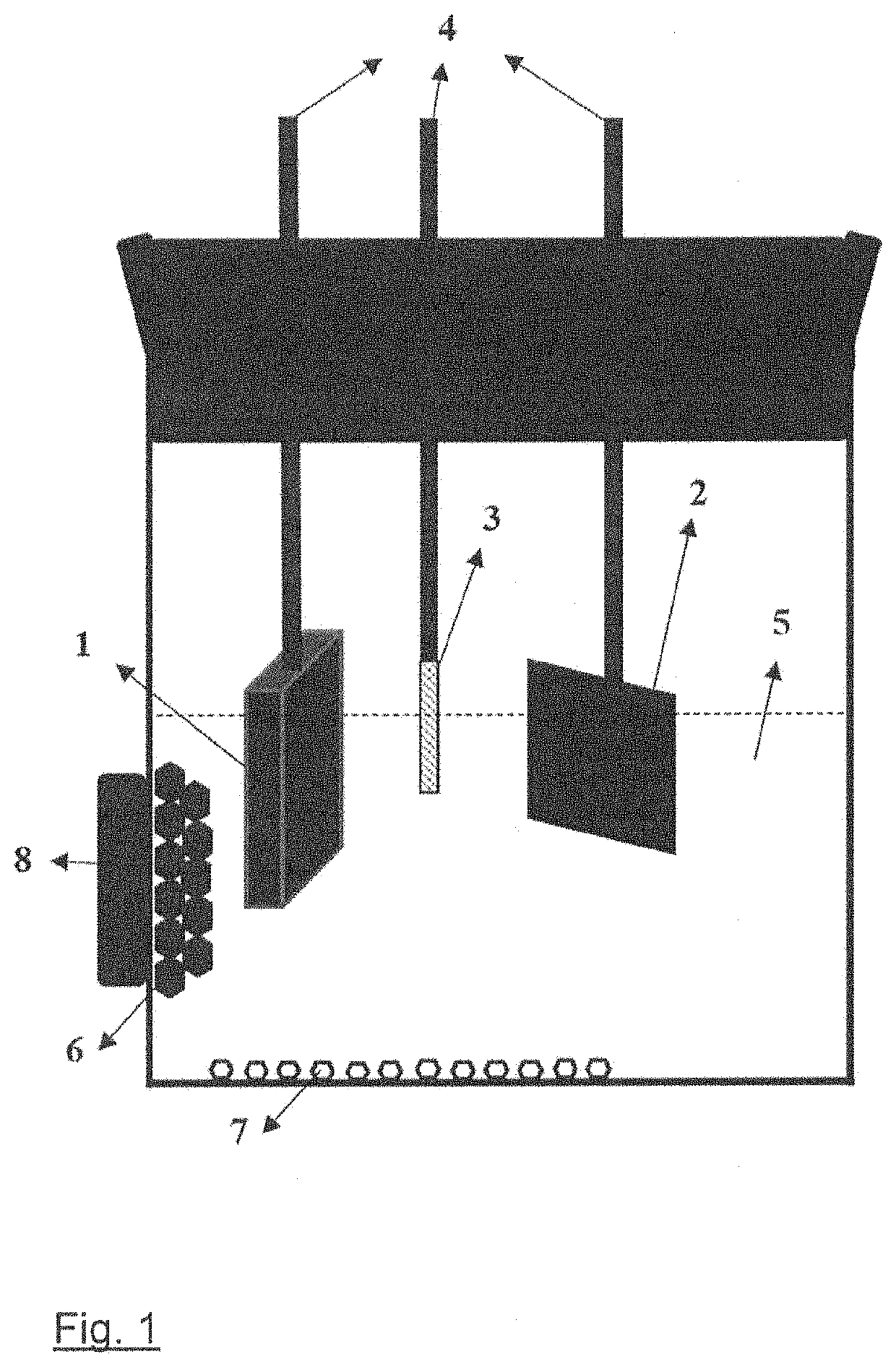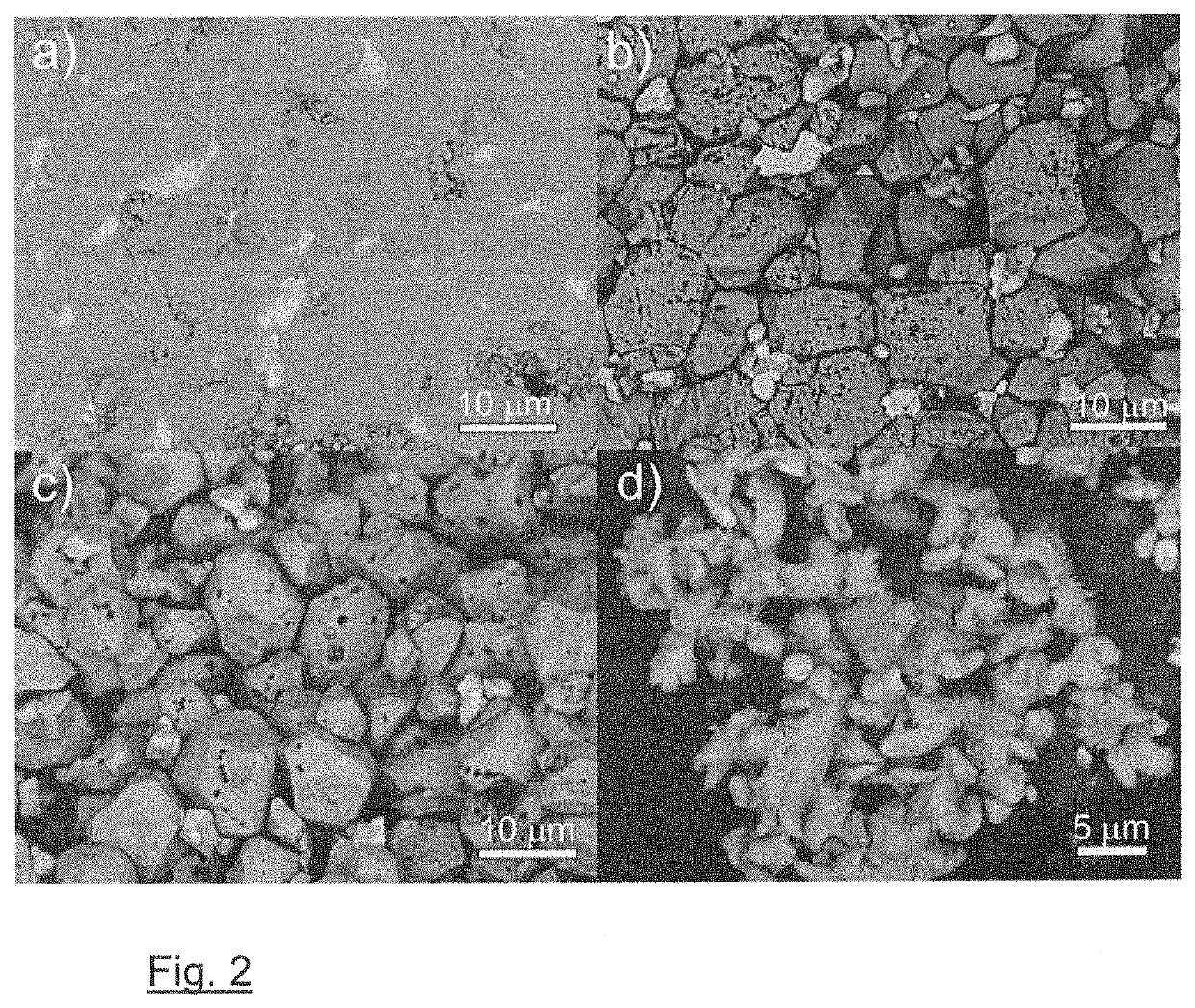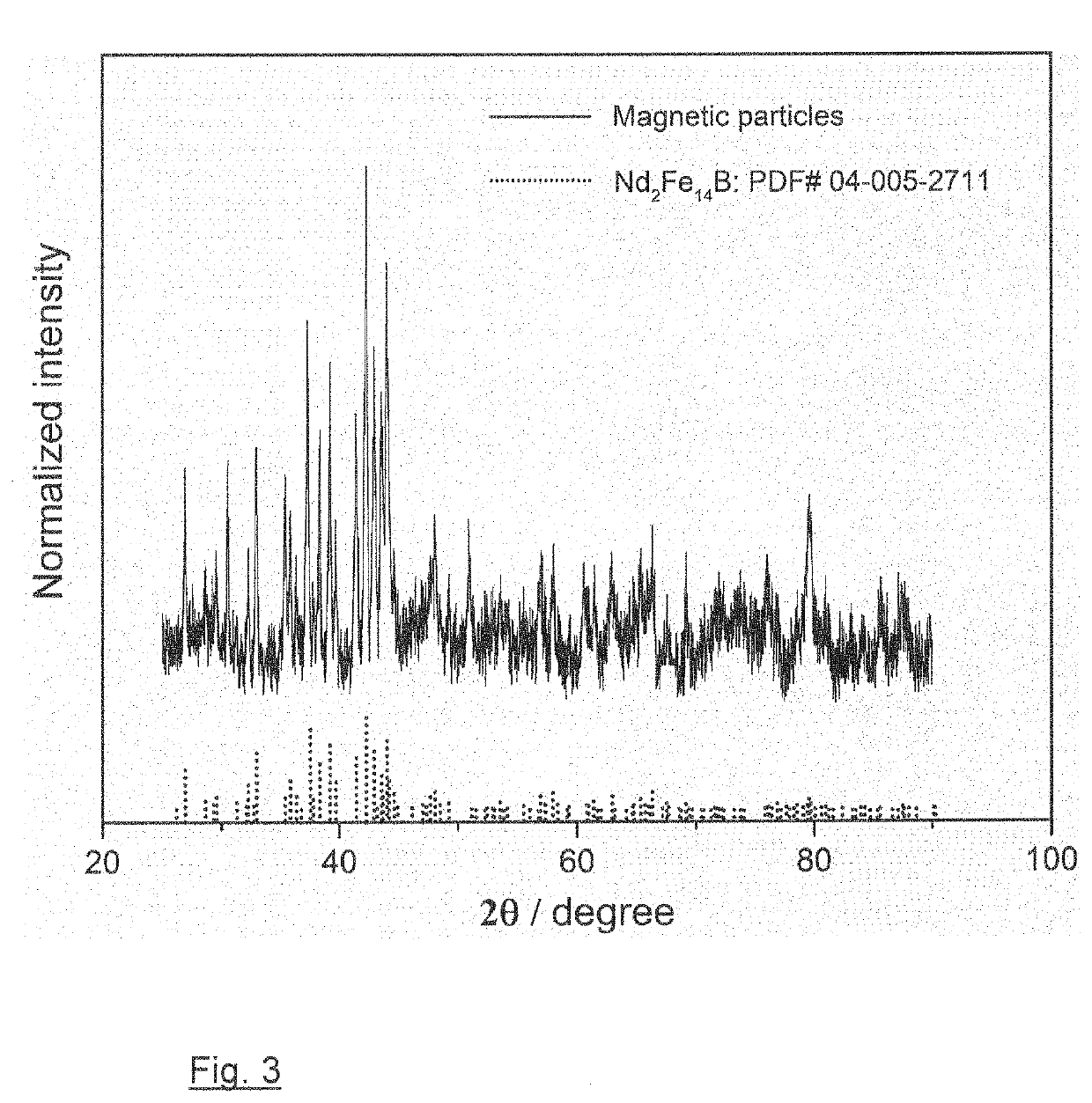METHOD FOR RECOVERY OF Nd2Fe14B GRAINS FROM BULK SINTERED Nd-Fe-B MAGNETS AND/OR MAGNET SCRAPS BY ELECTROCHEMICAL ETCHING
- Summary
- Abstract
- Description
- Claims
- Application Information
AI Technical Summary
Benefits of technology
Problems solved by technology
Method used
Image
Examples
example
[0028]The proposed method is performed in this example using the three-electrode cell of FIG. 1 with 15 mL DMF containing 0.3 M FeCl2 at room temperature. A Nd—Fe—B magnet (15 mm*30 mm*2 mm) is served as the anode, a Cu foil (10 mm*10 mm) is used as the cathode and a Pt wire (0.5 mm diameter) is applied as the reference electrode. Electrochemical etching of the Nd—Fe—B magnet started by applying the current density of 2-48 mA·cm−2 on the anode. The morphology of the anode was examined by SEM. In order to collect enough particles and investigate the etching efficiency of REEs, an electrochemical etching experiment with applied current density of 2 mA·cm−2 for 6 hours was conducted. Since the magnetic particles formed after etching tend to be attracted by the anode, therefore, for magnetic particles collection, at every one hour interval the etched anode was manually put close to the external magnet to separate these particles from anode. The metallic Nd which was not completely etche...
PUM
| Property | Measurement | Unit |
|---|---|---|
| Temperature | aaaaa | aaaaa |
| Temperature | aaaaa | aaaaa |
| Dissociation constant | aaaaa | aaaaa |
Abstract
Description
Claims
Application Information
 Login to view more
Login to view more - R&D Engineer
- R&D Manager
- IP Professional
- Industry Leading Data Capabilities
- Powerful AI technology
- Patent DNA Extraction
Browse by: Latest US Patents, China's latest patents, Technical Efficacy Thesaurus, Application Domain, Technology Topic.
© 2024 PatSnap. All rights reserved.Legal|Privacy policy|Modern Slavery Act Transparency Statement|Sitemap



